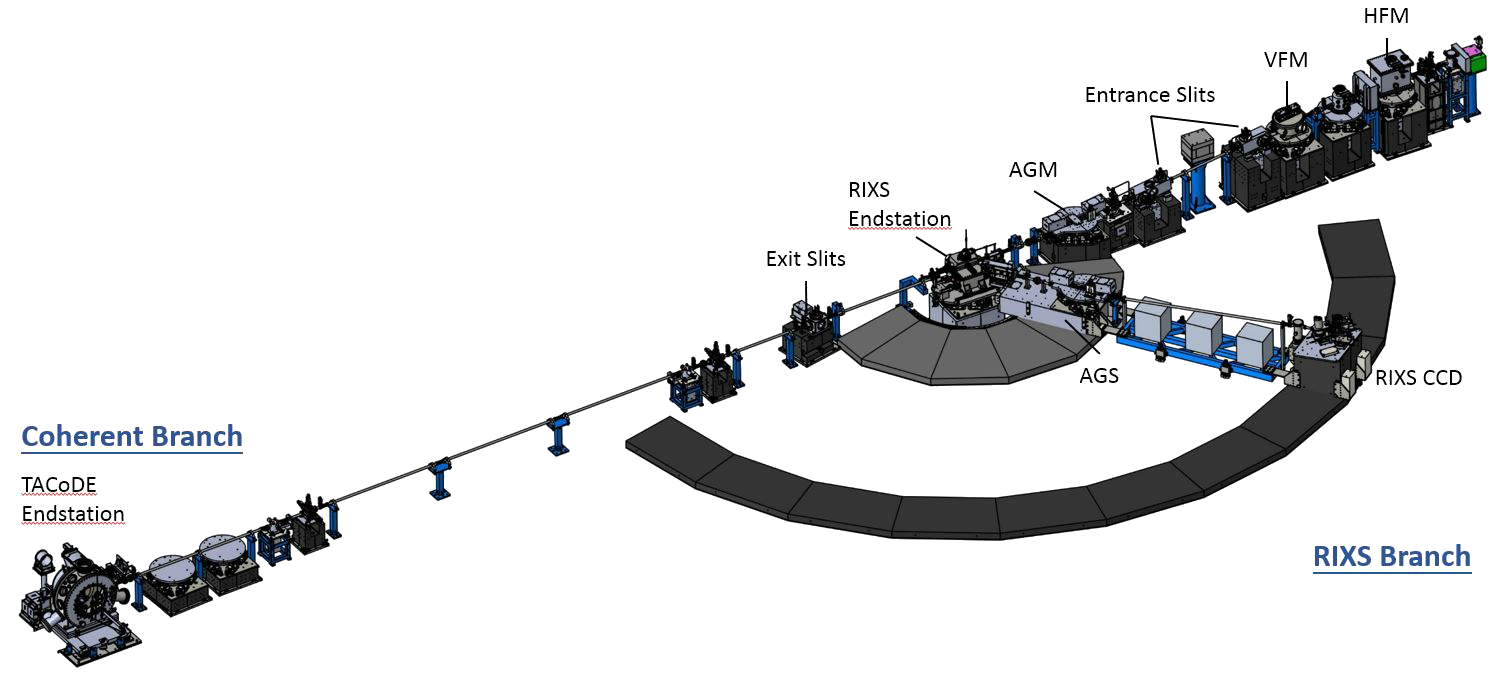41A Soft X-ray Scattering

Introduction
The interaction of soft X-rays with strongly correlated electron materials gives rise to rich information about their electronic and magnetic properties. Recent advances on the techniques of synchrotron soft X-rays provide us with great opportunities to investigate novel functional materials. The objective of this project is to take advantage of the Taiwan Photon Source to establish advanced soft X-ray scattering techniques for studying electronic and magnetic properties of strongly correlated electron materials such as transition metal oxides. This beamline includes two branches for soft Xray spectroscopy, resonant inelastic X-ray scattering (RIXS), and coherent X-ray scattering (CXS) in the soft X-ray regime. The RIXS branch is composed of two active gratings for the monochromator and the spectrometer, i.e., the AGM and the AGS. The second branch, the CXS branch, comprises the Taiwan-Anglo Coherent Diffraction Endstation (TACoDE) to facilitate studies of coherent resonant diffraction at the soft X-ray absorption edges, typically those of the transition metal L edges.
Scientific Opportunities
Symmetry breaking in solids typically leads to creation of ordering. Ordered states and elementary excitations such as magnetic and electronic excitations of strongly correlated-electron materials have been long-standing research topics. One of the hot subjects in current research of condensedmatter physics is the interplay between spin, charge, orbital, and lattice degrees in functional correlated-electron materials. This interplay is important for an understanding of emergent physical properties of complex oxides, particularly in the study of phase transition and physical phenomena associated with charge-spin-orbital degrees of freedom. Such interplay often leads to exotic phases and phenomena exhibited by many transition-metal oxides. The magnetic and transport properties are closely correlated to orbital and charge degrees of freedom. For example, orbital ordering, in which orbitals are alternately occupied from site to site, is often a precursor to magnetic ordering, while short-range orbital correlations might be related to fundamental physics of other emergent properties. There have been intense efforts to clarify the microscopic mechanisms giving rise to such exotic phenomena. One fascinating example is magnetoelectric multiferroicities of frustrated magnets. Because of non-zero coupling between orbitals on adjacent sites, collective excitations of the orbital degree of freedom, i.e., orbitons, are expected.